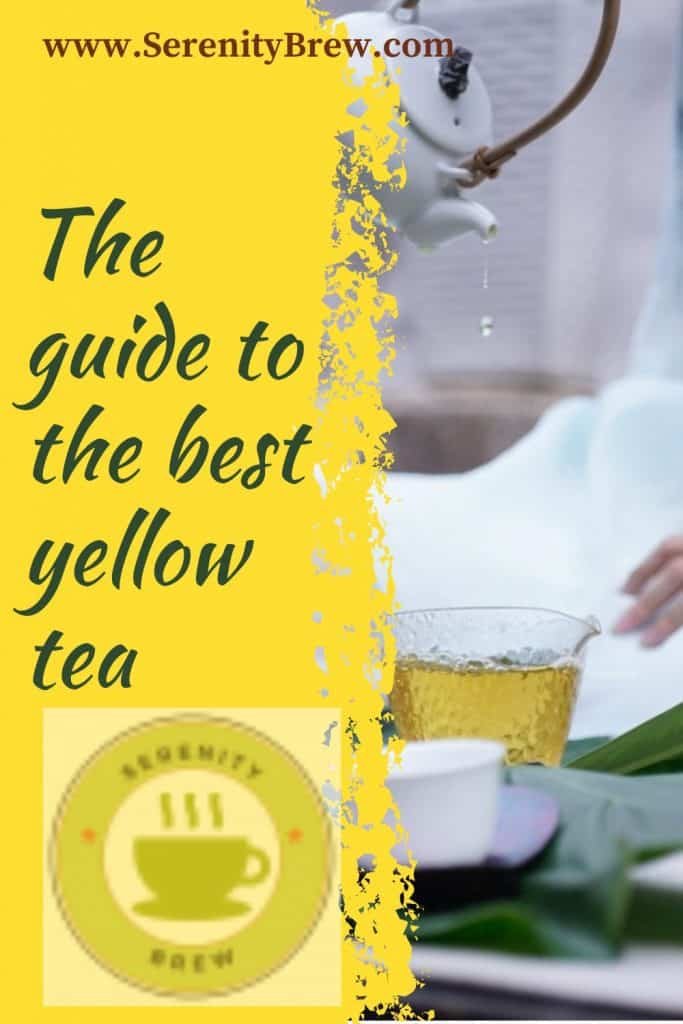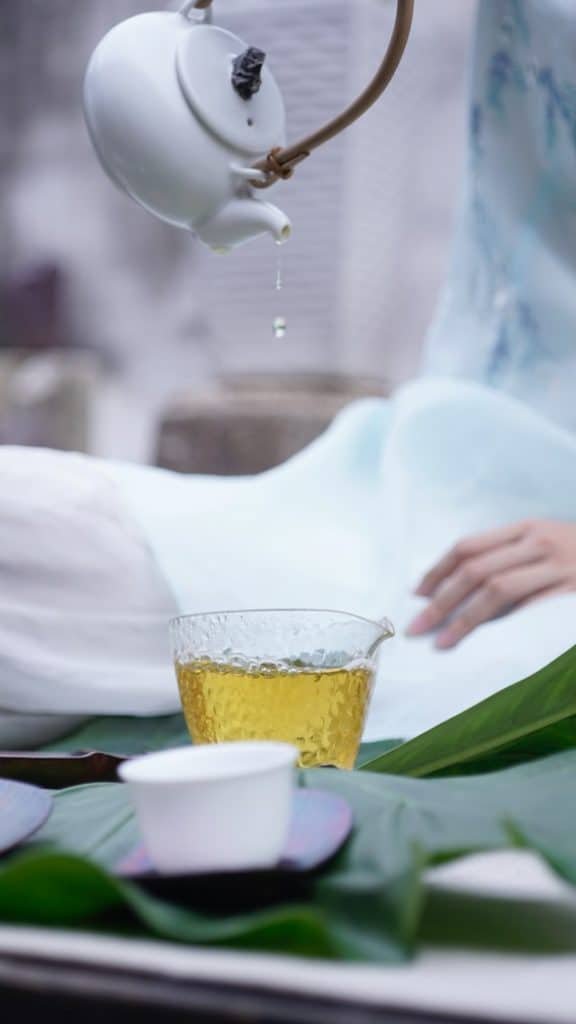
Have you heard of yellow tea? It is possible that not, since it is a little known variety of tea, at least outside of China.
Yellow tea can be a good find for those who like good quality green teas. It is softer on the palate and less astringent. Popular wisdom also says that it preserves the health properties of green tea but is less aggressive for the stomach.
Yellow Tea Basics
Yellow tea is a rare (and usually expensive) variety of tea. It is difficult to find, even within China itself. Its production process is more complicated than that of green tea and not all producers have the experience to do it.
Yellow tea is often put in the same category as white tea due to its low oxidation.
Its production process, in fact, is very similar to that of green tea, except for a distinctive phase that alters its flavor and gives it its peculiar color. This process transforms the aromas of the tea and reduces the characteristic herbal aromas of green tea.
Best yellow tea
Junshan Yinzhen
Junshan Yinzhen is one of the teas included in the list of Famous Chinese Teas (the list that brings together the most notable Chinese teas). Mao Zedong, one of the key historical figures of the 20th century and a famous Hunan peasant, declared that Juan Shan Yin Zhen was his favorite tea.
This tea is grown on Junshan Island, in the Hunan province of China. Apart from geographical restrictions, the production of this tea is very limited, since its harvest is only carried out until the date that marks the Chinese festival of the ancestors (Quin Ming)
Junshan Yinzhen is characterized by a mild flavor reminiscent of sugar cane and a fruity aroma. Its infusion is bright yellow and is refreshing on the palate.
Huoshan Huangya
This tea was used as an imperial tribute during the time of the Chinese Tang dynasty. It is produced in Anhui province, where the famous Mount Huo tea plantations are located. The tea leaves are picked by hand before Guyu, the traditional Chinese solar calendar period that usually begins in April.
Its most notable characteristic is its flavor reminiscent of chestnuts, on the other hand, it is a round tea, with little astringency and a smooth and full-bodied infusion.
The leaves of this tea are greenish-yellow when brewed. It is recommended to use a Gaiwan to enhance its fragrance and delicious flavor.
Meng Ding Huang Ya
Another of the famous teas that served as imperial tribute in ancient China. The Meng Ding Huang Ya comes from Sichuan province. In fact, it owes its name to the Meng Ding Mountain; this area is considered the cradle of the tea culture.
This tea consists of practically only buds. Its background flavor is reminiscent of the fresh grass of green teas, but has hints of dried fruit and a sweet, even vanilla fragrance. Its infusion is extremely smooth and full-bodied.
Song Yang Ying Hou Cha
The leaves of this tea are silvery, long and curly. We don’t know how it happened exactly, but at some point in history, someone (who perhaps had not only drunk tea that day) found a strange resemblance between the tea and the paws of the silver monkeys common in the area and decided to baptize the tea literally like: silver monkey tea.
Song Yang Ying Hou Cha is grown in Zhejiang province, near the course of the Ou River. Its fertile soils give it a floral character and light notes of nuts.
Huang Dacha
Huang Da Cha is made according to the yellow tea production method, but it is roasted considerably longer before going through the oxidation phase. This gives it a rich aroma reminiscent of roasted rice or coffee.
It is made in the province of Anhui and its name refers to the large leaves used for its manufacture.
Other yellow teas
Other varieties of yellow tea still exist, but they are relatively little known even in China and extremely difficult to find outside the country.
We have Huang Xiao Cha, a tea grown in Anhui province whose name means little yellow tea; Da ye Qing, grown in Guangdong province; Huang Tang, commonly known as yellow soup due to the color of its infusion, or Beigang Mao Jian, a yellow tea from the Hunan province.
Cultivation and rarity
Yellow tea is made almost exclusively in China and many of its varieties never cross its borders.
Making yellow tea requires a complicated and tedious process and unfortunately many of the ancient techniques have been lost. In the market, the most famous yellow teas keep their name of yesteryear, but not all of them have kept their original production methods.
A sad example is the once famous Huo Shan Huang Ya, which used to be produced in Anhui province until the technique was lost due to the abandonment of producers due to low profitability. This tea continues to be found on the market, but the way it is made has changed.
Elaboration: the Meng Huang
The techniques for making yellow tea vary depending on the area, but they have several points in common.
After the tea is picked, it goes through the traditional “kill the green” phase, in which the tea is roasted in a wok. This step is common in the production of many teas, such as green teas. In the case of yellow tea, the roasting is usually softer, at a lower temperature and for less time.
After this, Meng Huang begins, the technique that defines what a true yellow tea is.
Meng Huang would come to mean something like suffocation or suffocation and is a slow oxidation process applied to tea leaves. To make it, the tea is wrapped in paper or cloth, steamed to moisten, and stored to oxidize. This process can be repeated several times.
The Meng Huang eliminates the classic vegetal notes of green tea and wonderfully rounds out its flavor. It is also responsible for the tea acquiring its yellowish tones.
History
As in most cases, there is an ongoing debate about the exact origins of yellow tea. It is believed that these teas began to be made during the Qing Dynasty (1644 to 1911).
Yellow teas began to be produced in areas already famous for their green tea production, such as Huo Shan, in Anhui province, or Meng Ding Shan, in Sichuan.
Yellow teas have never had a large market presence and have been made more to satisfy the palate of local consumers.
The preparation of yellow teas is difficult and laborious. Today, there are hundreds of varieties of green tea on the market, while yellow tea is just a few.
How to prepare yellow tea

Yellow tea is usually not easy to find. You will not see it in the form of tea bags or find it on the shelves of your supermarket. You can get it in specialized stores.
The preparation of yellow tea is similar to that of white tea. The main danger to getting a good yellow tea will be to go too far with the temperature of the water. Pay attention not to use boiling water, heat it only up to 70ºC or 80ºC.
Steep two to three minutes for the brew to develop the complex flavors of yellow tea. Observe how the water is dyed with the striking colors of this family of teas.
